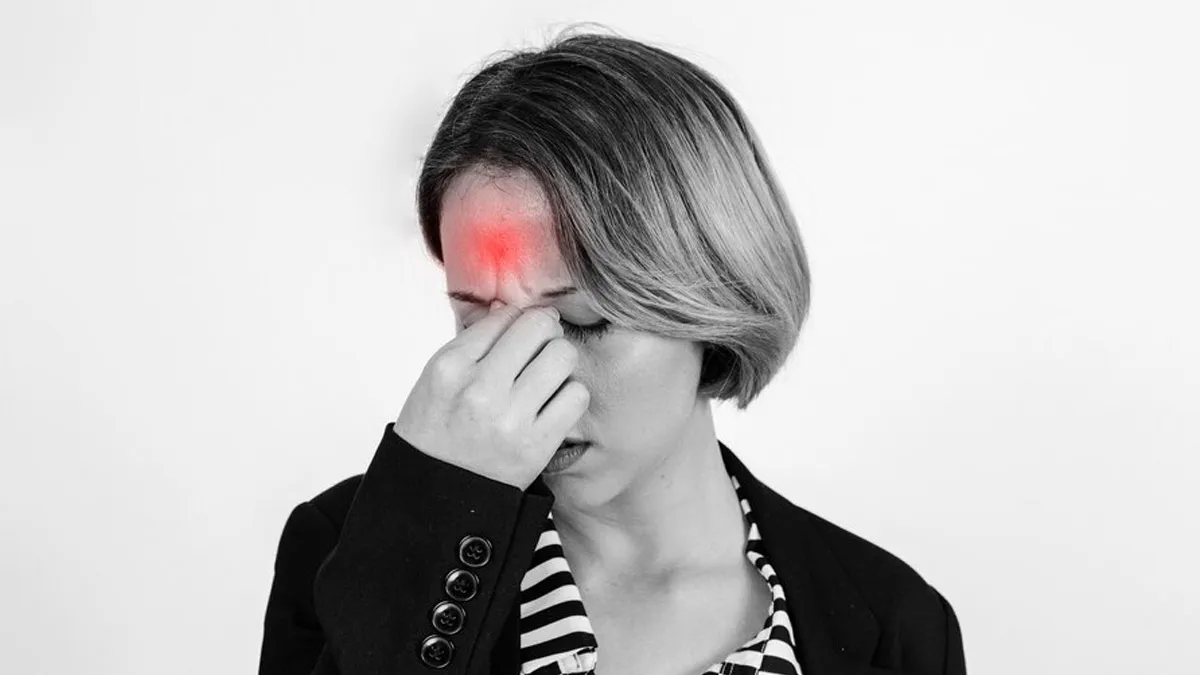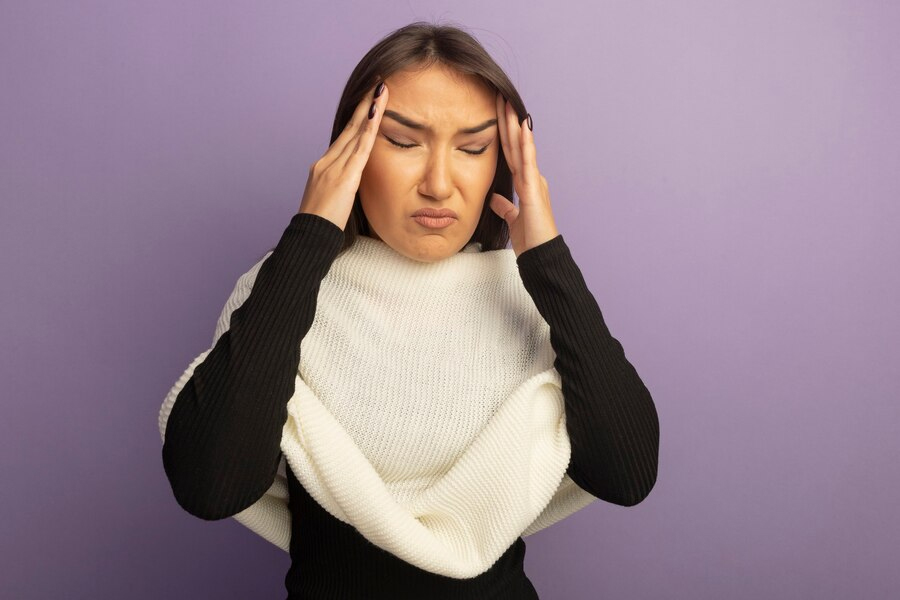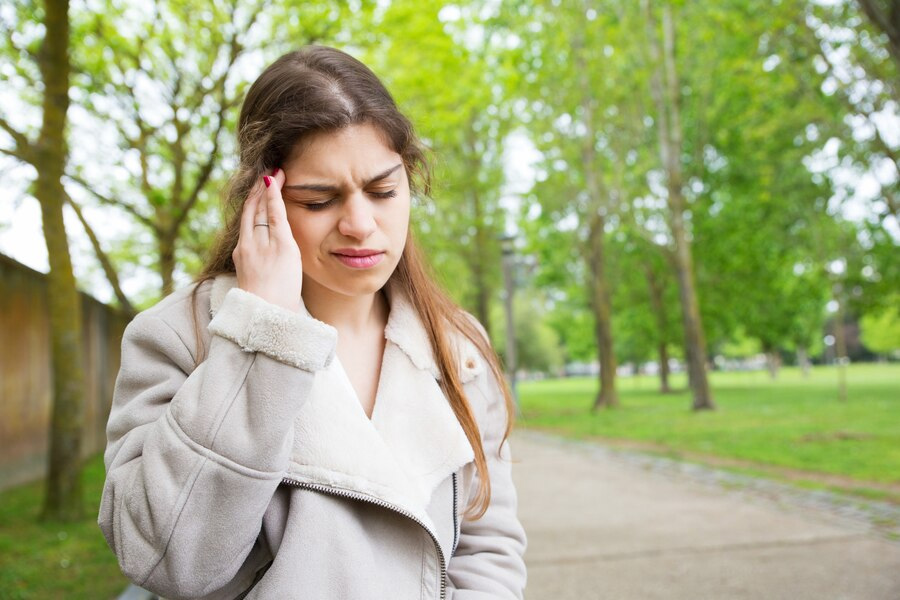
There are several causes of headaches. But migraine, a neurological disorder, can be one of the most concerning causes. The headaches associated with migraines aren't like your regular headaches and can be throbbing and pulsing, affecting your daily activities. What's worse is that some studies suggest migraine headaches increase during winter, prompting patients to take extra measures. OnlyMyHealth spoke to Dr Bhargavi Ramanujam, Neurologist, PSRI Hospital, New Delhi, to confirm the same and to understand the link between seasonal changes and increased migraine headaches.
Table of Content:-
Also Read: The Hidden Link Between Migraines, Depression, and Anxiety: What You Should Know
Do Migraine Headaches Increase In Winter?

According to Dr Ramanujam, seasonal variations in migraines are reported in a subset of patients, with triggers often linked to specific weather conditions.
While bright sunshine and high temperatures during summer are common culprits, extreme cold or very cold weather can also provoke migraines in some individuals, he shared, adding that environmental factors like low air pressure, high altitudes, and humidity levels, though less studied, may also play a role. For instance, winter headaches are often reported in hilly or mountainous regions where low air pressure is prevalent.
A 2017 study published in the European Journal of Neurology found that living at high altitudes is associated with a higher prevalence and severity of migraines. Among 2100 participants, over half lived above 1000 m, and nearly a quarter resided at or above 2000 m. Migraine prevalence increased with altitude, rising from 27.9% at lower altitudes (0–499 m) to 45.5% between 2000–2499 m.
The odds of experiencing migraines were 1.5-2.2 times higher at higher altitudes compared to lower ones. Migraine severity also increased with altitude, with more frequent attacks (1.3-3.0 days/month), longer duration (9-24 hours), and more intense pain (35.5-56.9% reporting severe pain) up to 2499 m, before declining slightly above 2500 m, suggesting that living at higher altitudes impacts both the prevalence and intensity of migraines.
Dr Ramanujam added that reduced physical activity and low mood during shorter daylight hours in winter can exacerbate headaches.
How To Reduce Migraine Attacks In Winter?

To manage migraines during winter, it is crucial to counter seasonal triggers.
Some of the strategies include:
- Regular physical activity, whether indoors or outdoors, to help maintain circulation and reduce tension.
- Establishing a consistent daily routine to provide a sense of stability and reduce stress.
- Staying warm, as sudden temperature drops can exacerbate migraines. Staying hydrated, as dehydration can worsen headache intensity. Focusing on mental well-being.
- Engaging in mood-lifting activities, such as listening to music, spending time outdoors, or taking short trips.
- Socialising and participating in joyful activities, which may reduce the frequency and severity of migraines during the colder months.
Additionally, it is crucial to identify foods that may trigger headaches and avoid them, advised Dr Ramanujam, warning against skipping meals and avoiding delaying meals. Also, try not to consume excessive amounts of tea or coffee.
Also Read: Migraine Relief Through Olive Oil: How Adding This Ingredient In Your Diet Can Alleviate Symptoms
What Triggers Migraine Headaches And How To Identify Them?

Migraines are recurring and can come and go. They usually last between 4 and 72 hours if left untreated, but some can last up to several days.
Common triggers of a migraine headache are stress, hormonal changes, hunger, dehydration, barometric pressure changes, certain foods, scents, or sounds, and caffeine. However, these factors can also cause regular headaches. So, how do you differentiate between a regular headache and a migraine headache, and how do you identify the latter?
The key is to be aware of the characteristics of migraine headaches.
For instance, migraine headaches are throbbing, pulsing, and range from moderate to severe. They usually occur on one side of the head and are felt in the forehead and scalp, or where the skull and spine meet.
It is also important to note that migraine headaches are often accompanied by other symptoms like nausea, vomiting, light sensitivity, and sensory disturbances like seeing flashing lights. Some people may also develop aura, which can include visual phenomena, pins and needles, weakness, or numbness.
Conclusion
Several factors can trigger migraines, including stress, dehydration, scents, sounds, and hormonal changes. However, in certain cases, cold weather can also increase migraine headaches, with some studies suggesting that it can impact both the prevalence and intensity of migraines. During winter, or for people living in hilly, cold areas, taking extra precautions is crucial, as it can not only help reduce migraine symptoms but also help manage them. Staying active, hydrated, and indulging in mood-enhancing activities can significantly reduce the risk of migraines and also the intensity of the symptoms. If the pain persists, it is best to consult a doctor or a neurologist for personalised guidance.
Also watch this video
How we keep this article up to date:
We work with experts and keep a close eye on the latest in health and wellness. Whenever there is a new research or helpful information, we update our articles with accurate and useful advice.
Current Version